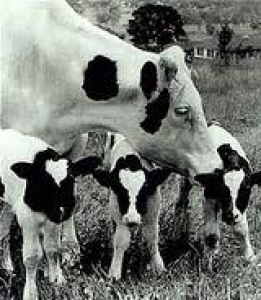The Solutions for dairy sector
EU Raw Milk Output to Increase by One Per Cent

Both the one per cent milk quota increase and larger production capacity built in anticipation of the end of the milk quota regime in three years factor into the raw milk increase.
It is expected that most of the increase will be consumed in production of cheeses which remain in demand both domestically and internationally. A decline of raw milk prices in the first quarter of 2012 combined with rising costs of production reduced profit margin of dairy farmers and cooled their euphoria for expanding production towards the end of the year.
Increased supplies of raw milk and slower export markets for dairy products are the major reason for declining prices within the EU-27.
The EU-27 dairy herd inventories are expected to continue to decline although higher yields will result in increased milk production. The raw milk output increase is expected to result in higher production of dairy products, mainly hard cheese, and residual manufacturing of NFDM and butter.
In April 2012, Polish Minister of Agriculture supported by Spain, Portugal, Hungary, Lithuania and Latvia requested the European Commission (EC) introduce export refunds and increase intervention prices for dairy commodities. Although the request was turned down by the EC it indicates that if the current trend of declining prices for butter and Non Fat Dried Milk (NFDM) continue this year, the EC will be pressured to consider intervention on the dairy market.
The remaining intervention stocks of NFDM built up in 2009 are expected to be consumed fewer than 2012 EU food assistance programmes. In March and April 2012, 47,000 MT of butter were accumulated under the Private Storage Aid scheme (PSA) which opened on 1 March and will close on 15 August. The amount of PSA built in March and April 2012 is 70 per cent higher than registered in March and April 2011, indicating a surplus of butter on the domestic market. The high PSA stocks were built despite the reduction of subsidies for storage under the PSA scheme announced by the EC on 23 February, 2012.
In 2011, exports of all dairy products, except Whole Dry Milk (WDM), increased in comparison to 2010 levels. Reduction of exports to Russia, a major export market for EU dairy products, was offset by increased exports to Asia. 2011 exports of NFDM increased by 37 per cent while exports of WDM dropped by 13 per cent.
Despite softer world demand for dairy products, during the first two months of 2012 exports of NFDM and whey climbed 23 per cent compared to the same period the previous year. However, exports of butter and butter oil dropped by 33 per cent and WDM declined 18 per cent compared to the previous year same period. Exports of cheese during the first two months of 2012 remained stable in comparison to 2011. Apart from world market conditions for dairy products, the exchange rate of euro to US$ will have a strong impact on further development of EU-27 overall exports in 2012.
The new EU somatic cell and bacterial standard plate count requirements were implemented as of 1 January, 2012. The phase-in period ended as of 1 April, 2012, so shipments of dairy products requiring an EU health certificate must comply with the updated certification programme and must be accompanied by an updated Certificate on Conformance.
Further Reading
| - | You can view the full report by clicking here. |






















